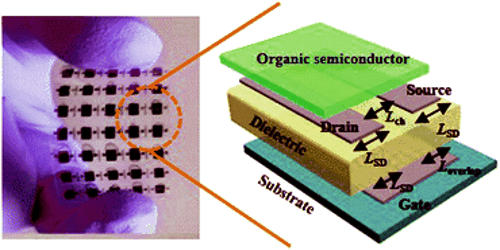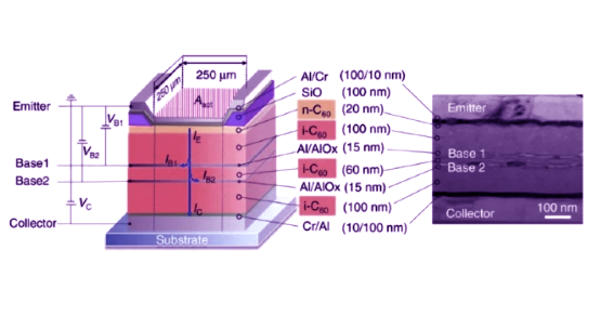Scientists create printable organic transistors
Scientists have come to a step closer to the vision of a broad application of flexible, printable electronics. Scientists at the Institute of Applied Physics at TU Dresden have come to a step closer to the vision of a broad application of flexible, printable electronics. High-definition roll-up televisions or foldable smartphones may soon no longer be unaffordable luxury goods that can be admired at international electronics trade fairs. High-performance organic transistors are a key necessity for the mechanically flexible electronic circuits required for these applications. The team around Dr. Hans Kleemann has succeeded for the first time in developing powerful vertical organic transistors with two independent control electrodes. The team has succeeded in developing powerful vertical organic transistors with two independent control electrodes.
“Scientists claim to have succeeded for the first time in developing flexible, printable, and powerful vertical organic transistors with two independent control electrodes.”
However, conventional horizontal organic thin-film transistors are very slow due to the hopping-transport in organic semiconductors, so they cannot be used for applications requiring high frequencies. Especially for logic circuits with low power consumption, such as those used for Radio Frequency Identification (RFID), it is mandatory to develop transistors enabling high operation frequency as well as adjustable device characteristics (i.e., threshold-voltage). The research group Organic Devices and Systems (ODS) at the Dresden Integrated Center for Applied Photophysics (IAPP) of the Institute of Applied Physics headed by Dr. Hans Kleemann has now succeeded in realizing such novel organic devices. They claim to have succeeded for the first time in developing flexible, printable, and powerful vertical organic transistors with two independent control electrodes.

Progress in printable organic field-effect transistors
In the study, the researchers report a device concept of vertical organic permeable dual-base transistors (OPDBTs). “Up to now, vertical organic transistors have been seen as lab curiosities which were thought too difficult to be integrated into an electronic circuit. However, as shown in our publication, vertical organic transistors with two independent control electrodes are perfectly suited to realize complex logic circuits while keeping the main benefit of vertical transistors devices, namely the high switching frequency,” says Dr. Hans Kleemann.
The vertical organic transistors with two independent control electrodes are characterized by a high switching frequency (a few nanoseconds) and an adjustable threshold voltage. These combine two spatially separated base electrodes to enable change of the on-currents and tuning of the voltage threshold. Thanks to these developments, even single transistors can be used to represent different logical states (AND, NOT, NAND). Furthermore, the adjustable threshold voltage ensures signal integrity (noise margin) and low power consumption.
With this, the research group has set a milestone with regard to the vision of flexible and printable electronics. By employing vertical-channel dual-base structures, the researchers were able to easily control the voltage threshold, which is a requirement for efficient logic circuits. In the future, these transistors could make it possible to realize even sophisticated electronic functions such as wireless communication (RFID) or high-resolution flexible displays completely with organic components, thus completely dispensing with silicon-based electronic components.














